Crossing the Chasm from Single to Multiplayer
Lessons and examples from Slack, Facebook, Airtable, Twitter, Notion and Duolingo on building the right early habits for multiplayer interaction and collaboration
Hi there, it’s Adam. 🤗 Welcome to my weekly newsletter. I started this newsletter to provide a no-bullshit, guided approach to solving some of the hardest problems for people and companies. That includes Growth, Product, company building and parenting while working. Subscribe and never miss an issue. Are you a parent? Or parenting curious? Listen to my new podcast Startup Dad. Questions? Ask them here.
The fastest-growing companies in the world have found a way to move from single-player to multiplayer mode. In other words, adding or expanding functionality that creates value for more than one person in an organization. Lauryn Isford is an expert in this area having led growth at multiplayer unicorns like Notion and Airtable and worked on growth at companies like Facebook and Dropbox. In my first ever (!) guest post she shares a framework for identifying your product’s multiplayer archetype and breaks down each of these three archetypes. She leverages examples from six different companies, including several where she has worked. This is a topic that I’m very excited to share with you! If you have comments or questions for Lauryn please leave them at the end!
Lauryn Isford is the Head of Product Growth at Notion. She leads their PLG efforts to kickstart and fuel flywheels of content creation. She formerly led growth at Airtable and also had growth stints at Dropbox, Meta, and Blue Bottle Coffee. She spends her free time meeting other growth fanatics and supports a portfolio of startups as an angel investor and advisor. When not thinking about growth loops Lauryn can be found playing the steel drum or exploring the great outdoors of the Bay Area with her labradoodle Ollie.
These days it feels like just about every SaaS or consumer product has some sort of multiplayer mode.
Single Player = product functionality and value intended for an individual user
Multi Player = product functionality and value best realized by multiple users
Multiplayer use of a product is a spectrum that spans from lightweight interactions to more substantial collaboration. Examples of lightweight interactions include product experiences like sharing your Instacart shopping cart with a family member, or browsing content listed by other users on WhatNot. A more substantial collaboration might include using Asana, which is most commonly used by teams managing a project.
But if some products are really designed to be used by one person then why are multiplayer upsells everywhere!? As an example, I recently noticed that one of the prominent upsells in Calm, a meditation app designed for single player use, is to share your meditation streak (days meditated this month) with others via Instagram Stories.

In my view, multiplayer mode is becoming increasingly common for two main reasons:
First, the obvious reason is that our world is more connected and virtually social. As our phones and the capabilities of software improve, so does the interconnectedness of those experiences. It is hard to remember the time ~7 years ago when private to-do list products like Bear were plentiful and the multiplayer experience of Words with Friends felt novel. Today we expect a degree of optional connected functionality in most applications.
Second, multiplayer behavior tends to be really beneficial for software businesses. Within SaaS, seat-based pricing (pay per user) has proven to be so effective over the past few years that it’s become commonplace (Figma, Monday). And in consumer products there tends to be a strong correlation between engaging with others and retaining on the product: when Duolingo introduced its interactive leaderboards, the number of highly engaged learners on the platform tripled!
For growth practitioners like us, this multiplayer trend makes for a fun playground to explore. There are a myriad of ways to encourage and optimize multiplayer behavior and to wield this concept of multiplayer interaction in a way that brings value to both users and the business.
While it is easy to come up with ideas about how you might promote multiplayer use of a product—the Calm example I shared earlier—it is hard to do it effectively. I’ve included just a few examples below of the broad swath of referral programs out there; typically offering $10 in credit for inviting friends.
Many of these still exist inside products we know and love, but they seem to have all but disappeared as a relic of ineffective growth strategy…. and with good reason! When was the last time you actually celebrated getting a $10 credit to pay for Figma, a product that is already (likely) being covered by your employer!?
Today we will take a tour of a few hallmark SaaS and consumer businesses that have navigated moving from single player to multiplayer growth loops really well. We’ll steer clear of the old school referral program and instead discuss a few tactics for how to modernize the multiplayer journey in your own product. You should leave this article feeling like you have a few ideas and strategies that translate well to your own work.
This post is *definitely* too long for your email. Check it out on the Web or in the Substack App.
As a framework for discussion you can think of products that involve multiplayer interactions fitting roughly into three main categories:
Collaboration is Core
Multiplayer is Better
Multiplayer Optional
Read on for a breakdown of each.
Product Archetype 1: Collaboration is Core
The batch of products in this archetype are the easiest to optimize; they’re inherently multiplayer. Examples might include Zoom, Trello, or the popular game Among Us [editor note: my son is obsessed with this game]. Engaging with other users is core to the value proposition and functionality of these products. It’s unlikely that anyone would stick around and use it by themselves.
For this type of product the most impactful investment you can make to drive multiplayer interaction is to nail initial onboarding.
Why? Well, first impressions really matter! It is essential that every user who gives your product a try is able to grok the core value and functionality that it offers. That is only possible if they interact with others. The large majority (>75%!) of customers in most SaaS and consumer products sign up and never return; a huge wasted opportunity to grow your user base.
From the user’s perspective, engaging with other users may feel scary, especially if they don’t have previous personal connections or understand your product well. If they can unlock the magic of your collaborative product right away, this sets them (and the people interacting with them) up for long-term retentive use.
Example Company #1: Slack [SaaS]
Slack is widely celebrated as a ‘collaboration hub’ for teams but we all know and love it for being our handy professional chat app. The core value proposition of Slack is to streamline team communication.
What I love about their initial onboarding is that they deeply incorporate multiplayer and team use into every step of signup. It is impossible for me to set up a workspace without knowing that Slack is designed for others and unlikely I’d finish set-up without inviting teammates.
They even auto-generate a team channel for me! This is A+ multiplayer onboarding and I would expect >90% of workspaces to have multiplayer use in the first few days.
Emphasis on signing up with a professional email:
Team-oriented messaging and visuals:
First step of set-up is team name:
Inviting teammates as part of initial set-up:
Reinforced messaging:
Auto-generated first channel to use with your team:
Example Company #2: Facebook [Consumer]
Facebook is the OG social app, of course. Its core value proposition is to connect with friends and then exchange and consume content together. Facebook’s initial setup is similarly focused on hitting those key multiplayer milestones: adding a picture for others to discover you, making a few friend requests, and surfacing suggested friends whom a user may already know by leveraging input data from contacts.
In my time working at Meta (which was called Facebook at the time) we measured if a new user had 5+ friends by Week 2 as the key signal that they were sufficiently activated on the platform.
Initial sign-up states the clear intention of connecting with others, adding a profile picture:
Leverage phone contacts to find friends, with a follow-up notification to confirm the user follows-through:
In summary, if you work on a product where collaboration is core, the most important tactic of a growth team to guarantee multiplayer usage is effective onboarding. Ensure that users connect with people, that they’re the right people and that those initial interactions in the very first session are high value. This will set them up for long-term retention.
Product Archetype 2: Multiplayer is Better
The batch of products in the Multiplayer is Better archetype are those that can be used either in single player or multiplayer modes. But they are objectively more valuable when used with others.
Most products in this bucket encourage multiplayer use on day one. These products see a sizable cohort of users who tinker on their own, generally missing out on key features, but discovering some value for themselves. Examples here might be team and project management apps like Asana or Evernote.
Unlike “Collaboration is Core” products, initial onboarding is typically not sufficient to ensure users are interacting with others in this archetype. As a result, for growth teams, it’s critical to layer in deeply contextual cross-sells to multiplayer features throughout a customer’s lifecycle.
It can be easy to overlook the value of consistency and repeated messaging to change user behavior over long time horizons. However, after initial onboarding, most products leave users alone until they are downgrading or churning from the product.
That’s far too late!
The drumbeat of email and product cross-sells is essential to ensure customers fully understand what other value is available to them and why they should take advantage of multiplayer features in your product.
Example Company #1: Airtable [SaaS]
Airtable is a relational database tool for building automated workflows that looks and feels a lot like a spreadsheet. There are many things you can build in Airtable as a single user but more than 90% of core use cases revolve around teams.
For example, the most popular use cases are marketing campaign trackers, project management and operations. Airtable follows the best practices of Slack and Facebook in focusing on team collaboration during onboarding. However, they also do a great job of following up with reminders of multiplayer use and value in email and in product over time. This gives users space to explore both single and multiplayer use and then to grow into those team use cases when they feel ready.
Note: I’m a little biased, because my team built the flow you see below! But I can promise you it was effective; driving >10% lift in multiplayer activation rate :)
Initial onboarding focus on team use, invitations, and use cases in initial set-up:

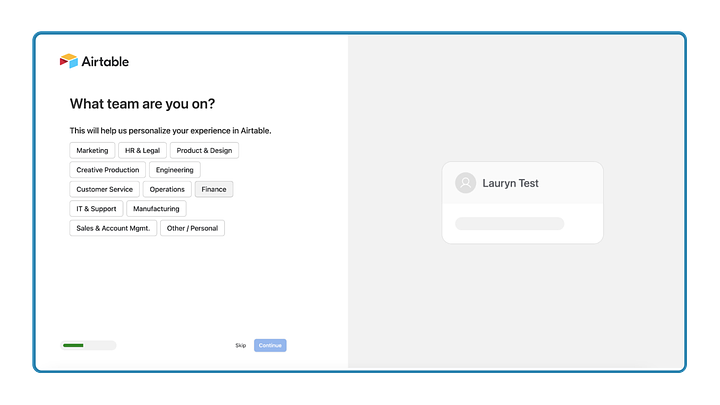


Multiplayer use is reinforced with contextual in-product prompts to include a team and a curated set of multiplayer templates with a prominent home entry point:
Airtable sends various complementary emails promoting how to use Airtable with your team in-context:
Example #2: Twitter [Consumer]
Twitter [editor note: “X.com”] is a great consumer example of similar best practices. Of course, it’s possible to use Twitter as an individual, passively consuming content from a small subsection of users you follow. But Twitter consistently encourages you to engage with other users and to grow your social graph over time. They focus first on helping you curate content then leverage consistent and contextual triggers to encourage engagement and content creation.
Twitter’s onboarding focuses on content curation, as well as initial following behaviors:
Throughout a user’s time on Twitter, they consistently and passively surface more smart following recommendations to grow your social graph:
When a user starts writing their first tweet, they are met with a contextual upsell to consider Twitter Circles – an option for sharing with fewer people. Although they’ll share with a smaller audience, more users will share content overall:
In summary, if you work on a product where multiplayer is better but not core, it’s important to consider how to infuse contextual moments that encourage multiplayer use throughout the lifecycle of the user. Ensure that users are repeatedly reminded of the benefits of engaging with others and help them feel empowered to give multiplayer interaction a try.
Product Archetype 3: Multiplayer Optional
Our third and final batch of products is a group where both the single and multiplayer experiences are genuinely great. I call this “Multiplayer Optional.”
In this case, there are lots of interesting reasons why someone might use the product on their own—perhaps more for personal use instead of work or because they prefer the information they use to remain private. However, users can also derive a lot of value when using the product with others. Examples may include Grammarly or Calendly.
For this archetype the most impactful tactic for a growth team is to pitch users effectively on the value of multiplayer; finding the intersection between their use case/interests and the product’s multiplayer offerings.
This is the hardest job of all. You have to earn the user’s trust that they should try something new without getting in the way of the key use case they’ve already found! In this situation you’ll need to find relevant and compelling ways for them to interact with others and really focus on how that interaction can unlock more value for them.
Example Company #1: Notion
I currently work at Notion, and I’m exploring this space with my team right now.
Notion celebrates and encourages a wide array of unique and valuable use cases for individuals. It’s very popular with students and for personal use: as one example, there are over 100 Habit Trackers listed in Notion’s Template Gallery today (the new template gallery launched recently - check it out here!).
In addition, Notion is widely used for note-taking, documents, project management, and wiki documentation within teams spread across larger organizations. One of the unique qualities of Notion’s product is its flexible tool-making capabilities which can be used in a single or multiplayer setting.
To encourage multiplayer interaction, Notion focuses on smart exploration—let the user explore the thousands of things they might be able to build over time and suggest relevant collaborative features or templates that meet them where they are, suit their current priorities and use case.
Notion’s homepage emphasizes the value of multiplayer use:
Tailor signup to either team, personal, or student use based on the user’s preference:
Relevant templates are provided and surfaced in-app and in the template gallery. The user is free to explore at any time in their journey:
Suggest use of ‘teamspaces’ to relevant customers, and explain how it can be used for more effective team collaboration:
Example Company #2: Duolingo [Consumer]
Duolingo is a great consumer example of how multiplayer usage layers on top of the core value of single player language learning. They use smart, contextual strategies to gamify interaction with other customers.
Set up a single-player account first, but discover some passive ways to engage with others including profile creation and adding friends:
Duolingo celebrates your success with the option to share streaks:
Leaderboards & Challenges are gamified, contextual ways to engage with others by completing lessons and demonstrating your skills:
If you work on a product that has genuinely great experiences for both single and multiplayer use it’s important not to degrade the single player experience with upsells. Find unique ways for users to find multiplayer features or use cases that are relevant to them. This might take the form of gamified challenges or templates. Study the interests of your customers and identify intersecting ways to bring them multiplayer value.
Wrapping Up
Well, we certainly covered a lot of ground today! Multiplayer product use is an exciting area to optimize and explore. I hope you’ll leave with some creative inspiration for your own pursuits.
I will leave you with three takeaways for crossing the chasm of single to multiplayer use:
Prioritize effective onboarding. Make sure the intention of multiplayer use is pervasive in the user’s first impression and initial set-up.
Invest in a consistent drumbeat of cross-sells. Encourage users to engage with others over time with relevant product and email messaging.
Consider highly contextual multiplayer interaction. Find unique ways to deliver value to users with multiplayer offerings, like leaderboards and relevant templates.
Thanks for reading! If you enjoyed it, be sure to check out some of the products I’ve helped grow over the years: Notion, Airtable, Facebook, Blue Bottle Coffee, Dropbox.
And find me on social (Twitter or LinkedIn) or comment below to share what tactics work well for you! I’d love to hear about your wins 🏆


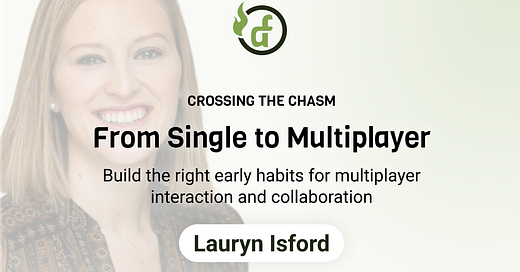








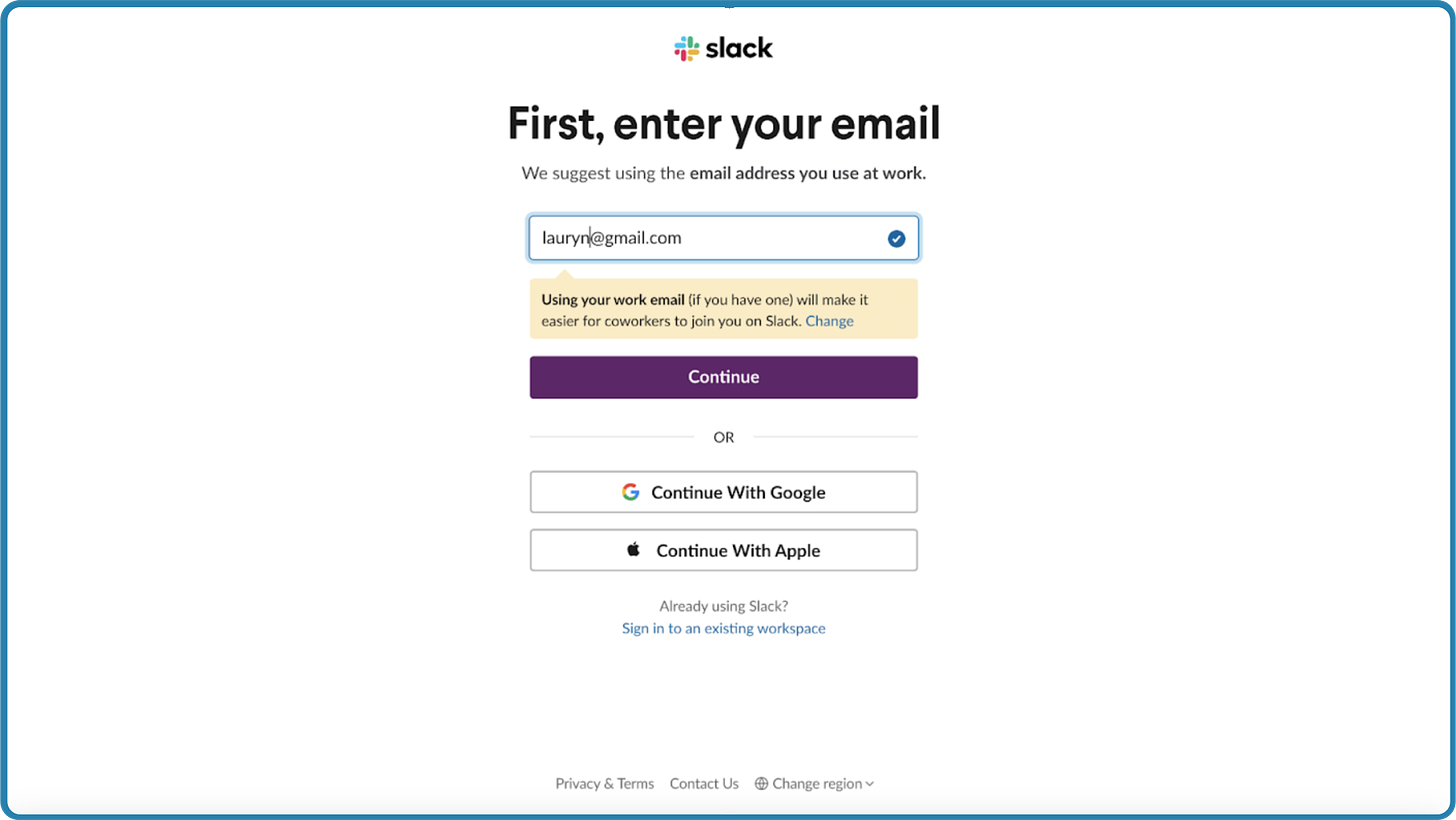
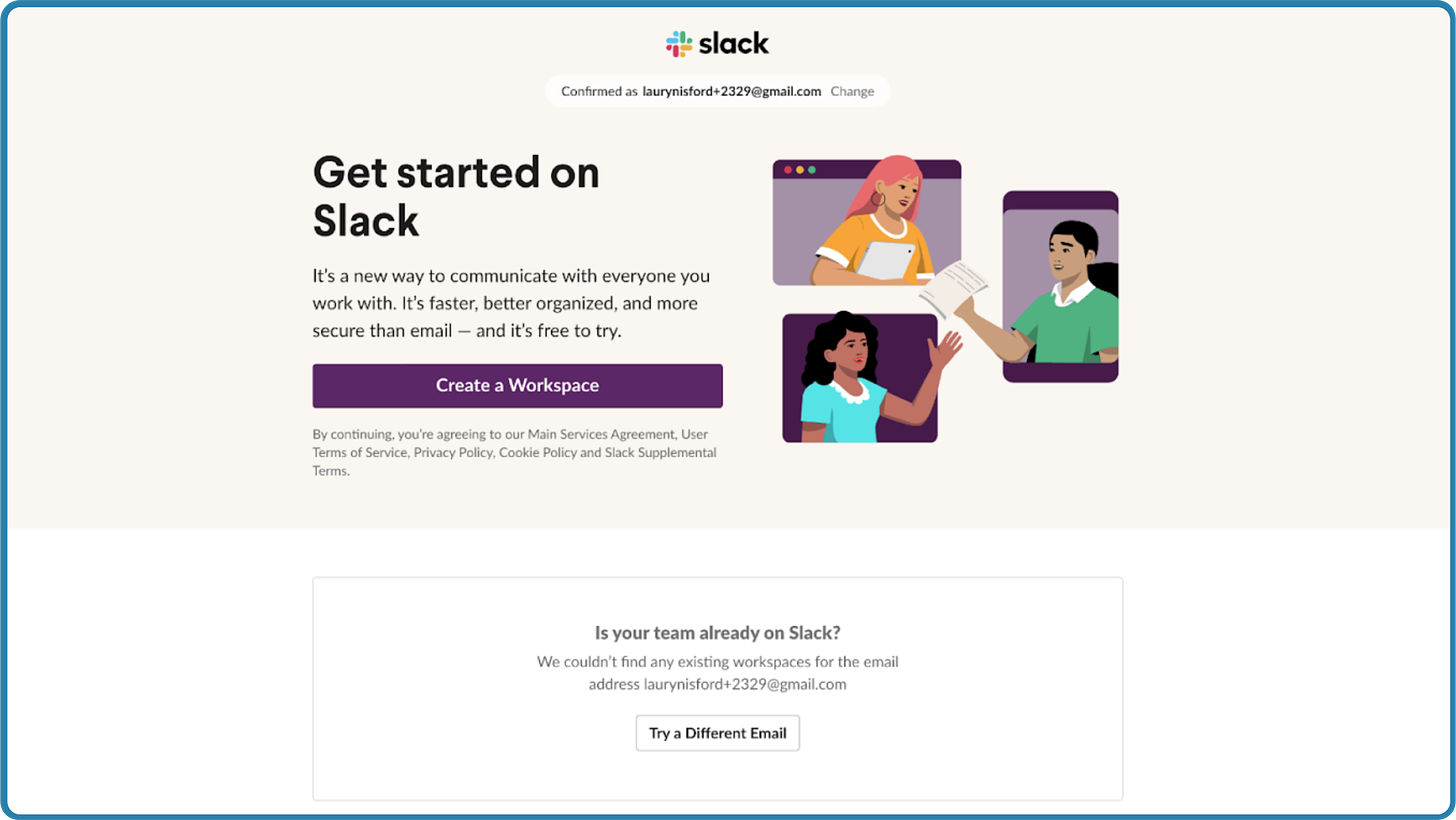






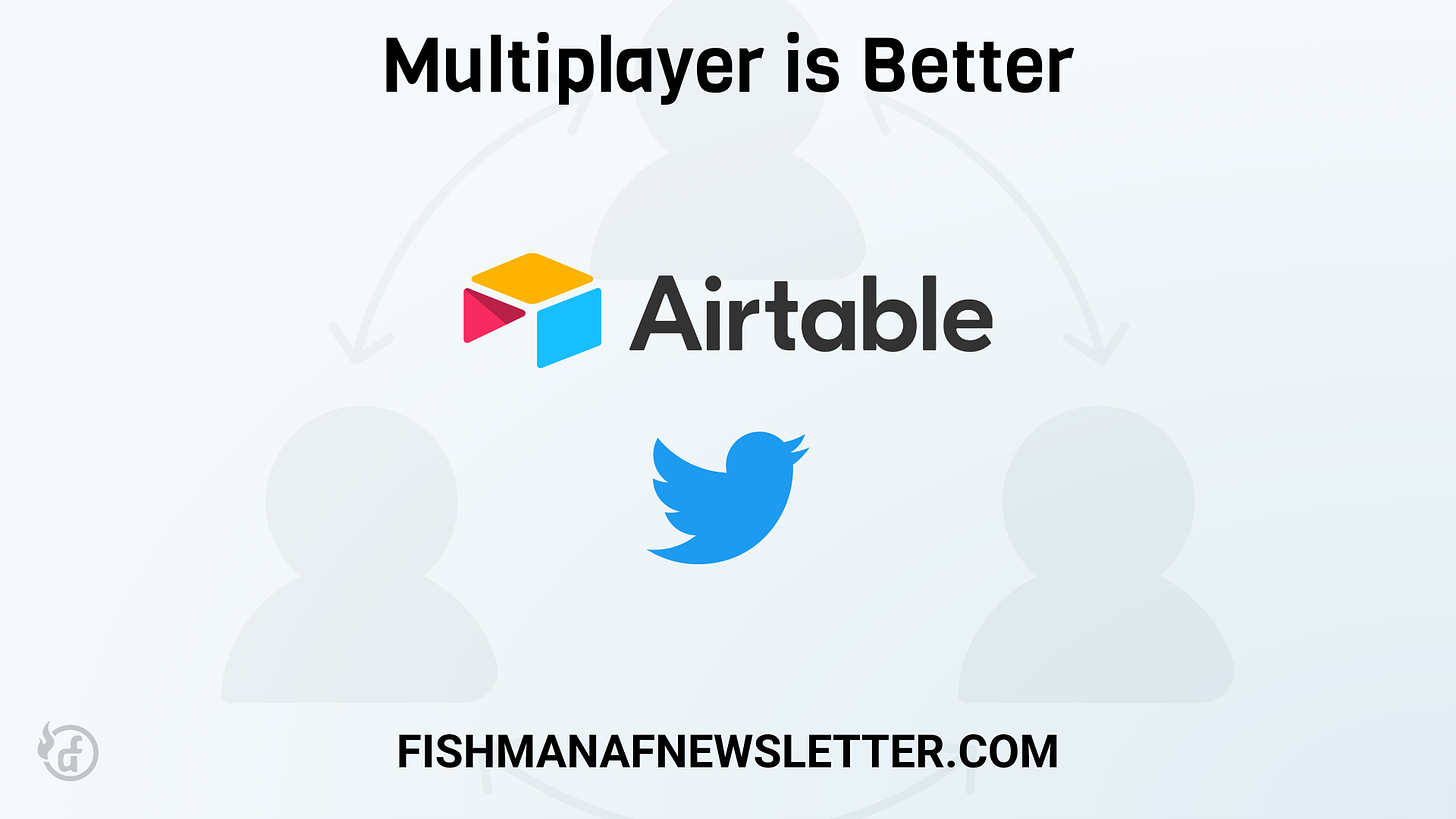







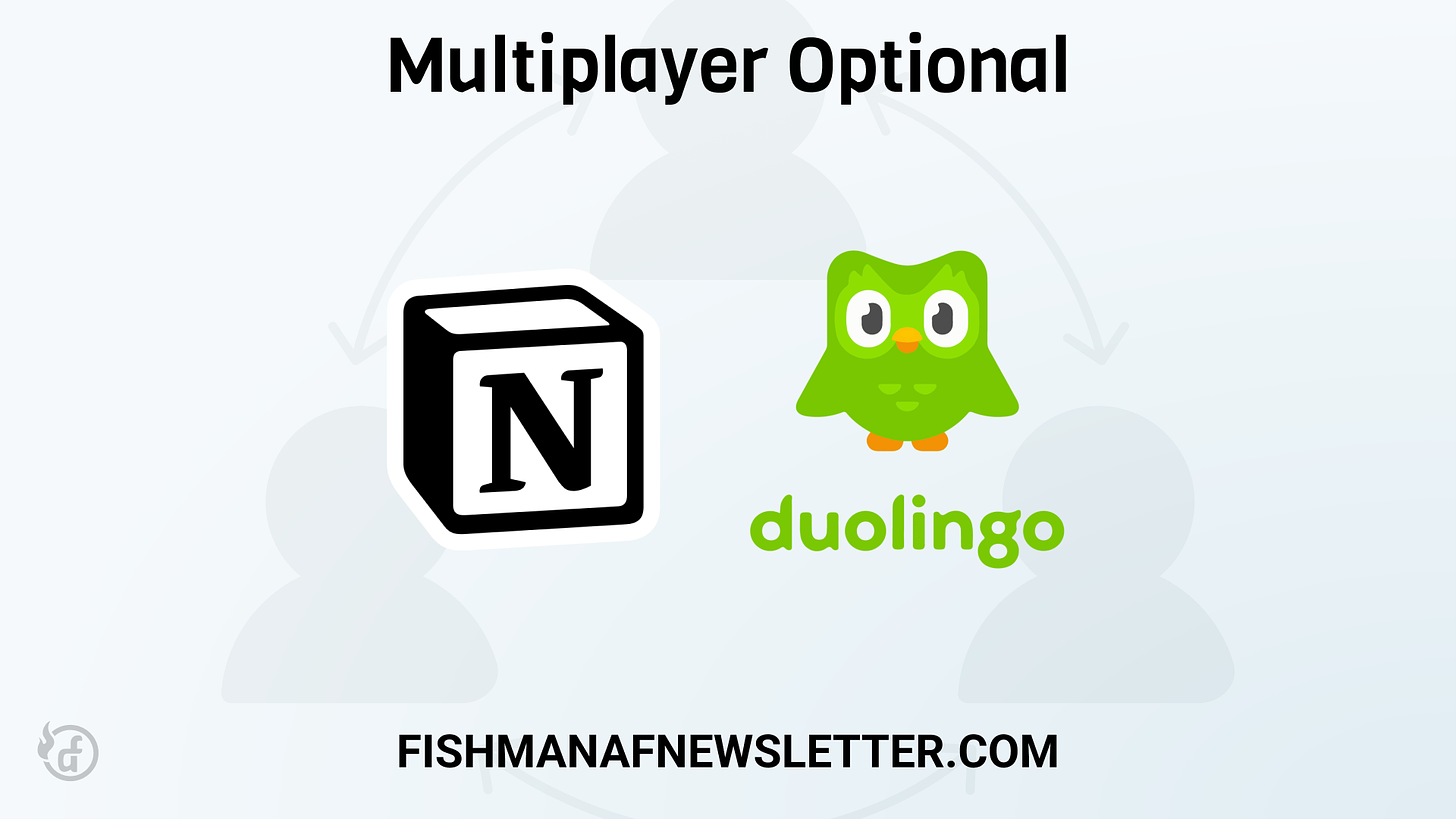




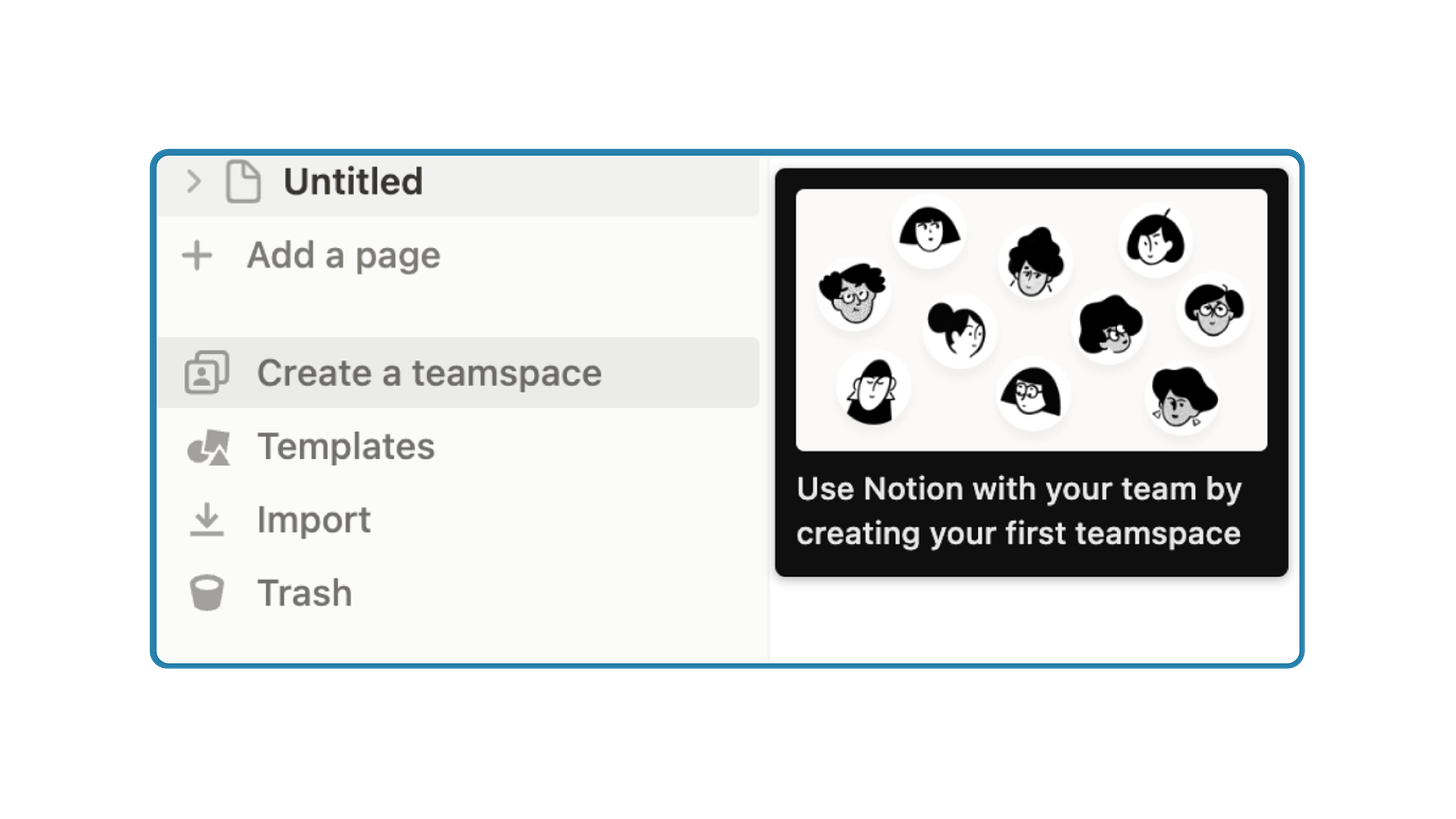





This is so top of mind for me. I'm currently researching how to nail invitee onboarding flow, as there's fewer articles on this topic (most are focused on workspace creator onboarding). Shared a few resources in my latest newsletter, but would love to know how you tackled this in the past. Maybe an idea for a following issue? :)
Woah Nelly! Good stuff!!!